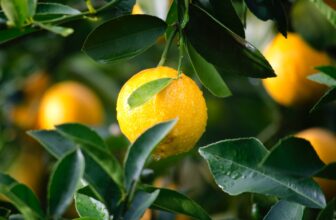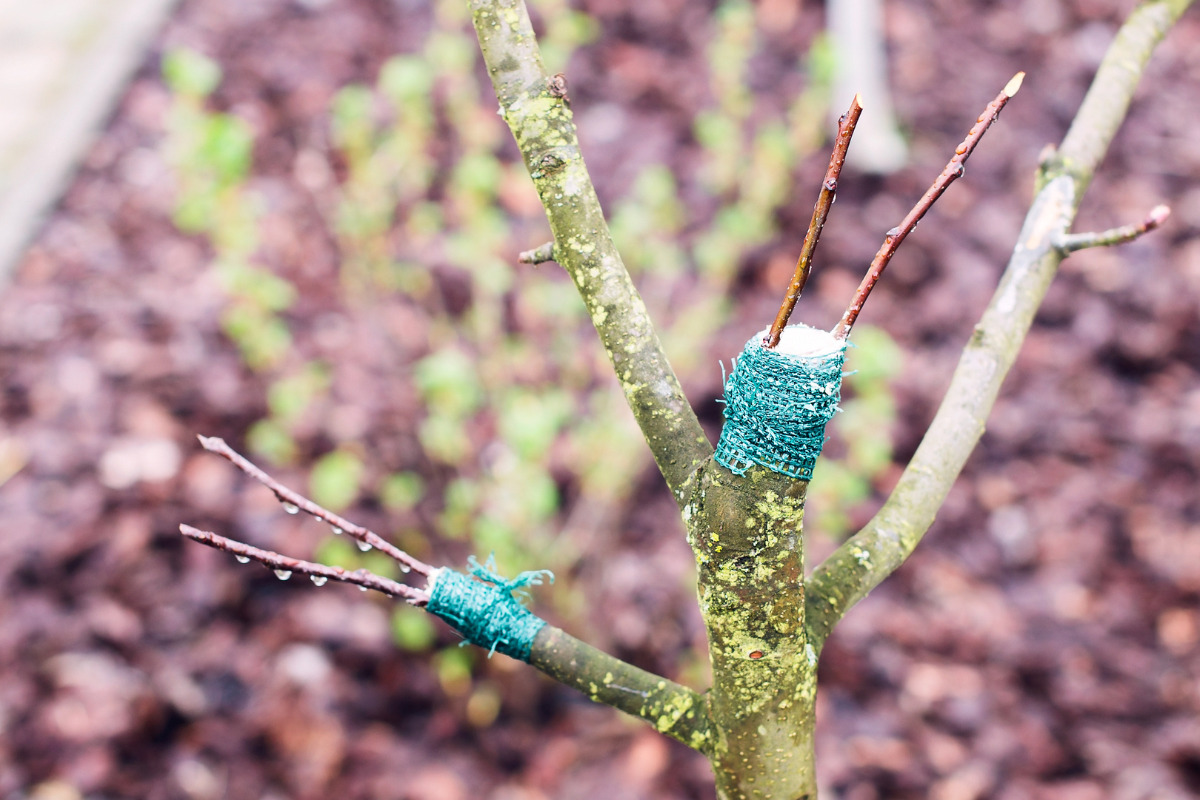
Table of Contents
Cleft grafting is a propagation technique that allows gardeners to combine the best qualities of two different plants into one. Being one of the easiest graft techniques that require low grafting skills, it’s the most popular grafting technique you could try.
Cleft grafting is used to join both flowering as well as fruiting trees to produce a whole new plant. Let’s have a closer look at what cleft grafting is and how it can be done in some simple steps.
What is Cleft Grafting?
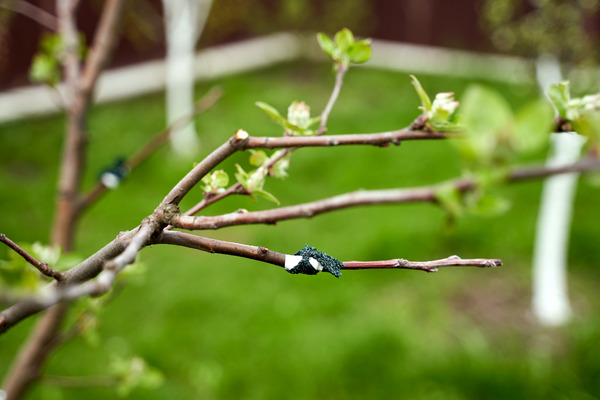
Cleft grafting is a type of plant propagation technique that involves inserting a scion (a piece of a plant stem with at least one bud) into a cleft or split in the trunk of a rootstock plant. The scion is typically chosen because it has desirable traits, such as a particular fruit or flower variety, that the rootstock plant lacks.
The goal of cleft grafting is to produce a plant that combines the root system and lower trunk of the rootstock with the upper portion of the scion. This technique is often used to propagate fruit trees, ornamental shrubs, and other woody plants. It requires careful planning and execution to ensure a successful graft, including selecting compatible scion and rootstock plants and properly aligning and securing the scion in the cleft.
History of Cleft Grafting
The history of cleft grafting dates back to ancient civilizations, with evidence of the technique being used in China as early as the 3rd century BC. The ancient Greeks and Romans also used cleft grafting, as did the Persians and Indians.
In the West, the technique was popularized during the Renaissance, when horticulturists and botanists began to experiment with plant breeding and propagation methods. Cleft grafting has been used for centuries to propagate a wide variety of plants, including fruit trees, ornamental shrubs, and even grapevines.
Today, cleft grafting remains a popular method of plant propagation, particularly for woody plants.
Pros and Cons of Cleft Grafting
There are several pros and cons to consider when it comes to cleft grafting:
Pros:
- Allows for the combination of desirable traits from two different plants into one
- Can be used to propagate a wide variety of woody plants, including fruit trees and ornamental shrubs
- Can be used to repair damaged or diseased plants
- Can be used to create new cultivars or varieties of plants
Cons:
- Requires careful planning and execution to ensure success
- Can be time-consuming and labor-intensive
- Can be difficult to do on plants with thick bark or wood
- May not be suitable for all plant species
Overall, cleft grafting is a useful technique for plant propagation and repair, but it’s important to carefully consider the pros and cons before deciding if it’s the right method for your needs.
What You’ll Need:
- Grafting knife: This is a specialized knife with a thin, sharp blade that is used to make clean, precise cuts in the rootstock and scion plants. You can also use a sharp paring knife or a pocket knife.
- Pruning shears: These are used to cut off any excess branches or twigs on the rootstock and scion plants.
- Grafting tape or rubber bands: These are used to secure the scion in place on the rootstock.
- Raffia or twine: These are natural fibers that can be used in place of grafting tape or rubber bands to secure the scion in place.
- Grafting wax or tree wound dressing: These are used to seal the cut surfaces of the rootstock and scion plants and protect them from pests and diseases.
- Rootstock plant: This is the plant that will serve as the base for the cleft graft. It should be healthy and robust, with a trunk that is at least 1 inch in diameter. Cleft grafting uses a rootstock that’s larger than the scion. You can do cleft grafting on the main stem as well as the scaffold or lateral branches during the winter and early spring seasons when the plant is dormant. The scions in cleft grafting should have no less than three buds, should be of ¼ inch diameter, and 6-8 inches long. While the rootstock should be straight and have a diameter of 1-4 inches.
- Scion plant: This is the plant that will provide the upper portion of the grafted plant. It should have at least one viable bud and be compatible with the rootstock plant.
- Clefting tool: This is a specialized tool that is used to make a clean, straight split in the trunk of the rootstock plant. It can be a chisel, a knife, or a specialized clefting tool.
- Ruler or measuring tape: These are used to measure the scion and rootstock plants to ensure that they are the correct size and shape for the graft.
How To Make a Cleft Graft
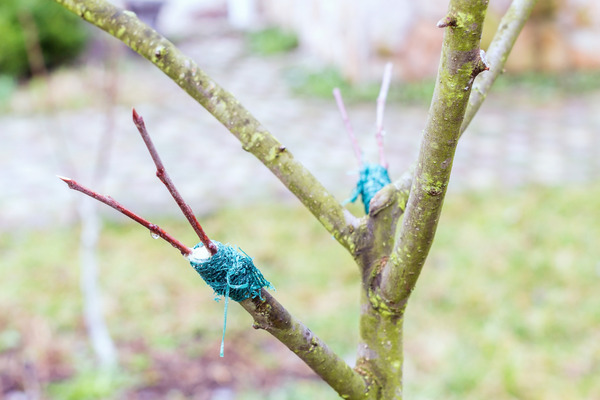
Here are the steps for making a cleft graft:
Step 1: Select the rootstock and scion plants
Choose healthy, vigorous plants that are compatible with each other. The rootstock plant should be at least 1 inch in diameter and the scion plant should have at least one viable bud.
Step 2: Prepare the rootstock plant
Use a clefting tool or a sharp knife to make a clean, straight split down the center of the rootstock plant’s trunk. The split should be about 2 inches deep and go all the way through the trunk.
3. Prepare the scion plant
Cut off any excess branches or twigs from the scion plant, leaving only a few healthy buds at the top. The scion should be about the same width as the split in the rootstock plant.
4. Insert the scion into the rootstock
Carefully align the scion with the split in the rootstock plant and gently push it into place. Make sure the scion is fully inserted and that the cut surfaces are tightly together.
Step 5: Secure the scion in place
Use grafting tape or rubber bands to hold the scion in place, or wrap it with raffia or twine.
Step 6: Seal the graft
Use grafting wax or tree wound dressing to seal the cut surfaces of the rootstock and scion plants. This will help prevent pests and diseases from entering the graft.
Step 7: Water the graft
Water the graft thoroughly to help it establish itself. Be careful not to overwater, as this can cause the scion to rot.
Step 8: Monitor the graft
Keep an eye on the graft to make sure it is healing properly. If the scion starts to wilt or turn yellow, it may not be getting enough water or nutrients. If this happens, carefully remove the grafting tape or bands and add more water or nutrients as needed.
Cleft Graft Aftercare
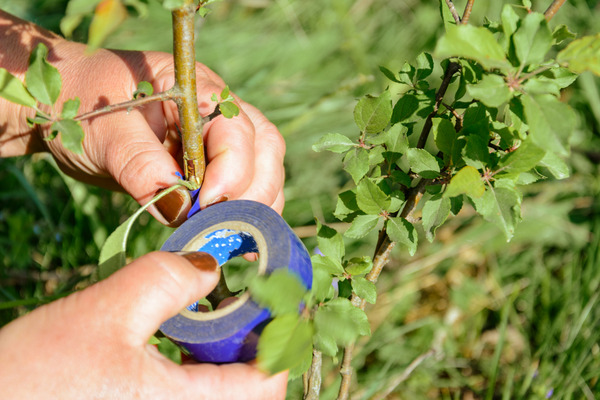
Cleft graft aftercare involves providing the grafted plant with the proper conditions to help it establish itself and thrive. Here are some tips for proper cleft graft aftercare:
- Water carefully: Water the grafted plant regularly, but be careful not to overwater. Overwatering can cause the scion to rot.
- Provide adequate sunlight: Make sure the grafted plant gets enough sunlight, but avoid direct, intense sunlight, as this can cause the scion to dry out.
- Protect from pests and diseases: Keep an eye out for pests or diseases that could damage the grafted plant. Use pesticides or other treatments as needed to keep the plant healthy.
- Prune as needed: Prune off any excess branches or twigs as needed to help the grafted plant grow properly.
- Fertilize as needed: Provide the grafted plant with the nutrients it needs to grow and thrive. Use a balanced fertilizer according to the plant’s specific needs.
- Monitor the graft: Keep an eye on the graft to make sure it is healing properly. If the scion starts to wilt or turn yellow, it may not be getting enough water or nutrients. If this happens, carefully remove the grafting tape or bands and add more water or nutrients as needed.
- Watch for any girdling: This is the damage of the bark area that connects the root system with the plant area above the injury. It takes up to 8 days for vascular connections to form and 14 days for severed areas to fully heal.
By following these tips for cleft graft aftercare, you can help ensure that your grafted plant grows and thrives.
Signs of Successful Cleft Grafting
There are several signs that a cleft graft has been successful:
- The scion is firmly attached to the rootstock: The scion should be securely in place and not wobbly or loose.
- The scion is growing new leaves or buds: If the scion is getting enough water and nutrients, it should start to grow new leaves or buds within a few weeks of being grafted.
- The graft union is healing: The cut surfaces of the rootstock and scion should start to heal and callus over within a few weeks of being grafted.
- The grafted plant is growing: If the graft is successful, the grafted plant should start to grow and thrive. This may take several weeks or months, depending on the plant species.
- The rootstock is not growing: If the rootstock is not growing, it is a good sign that the scion is taking over and the graft is successful.
It is important to monitor the graft and be patient, as it may take several weeks or months for the scion to start growing and for the graft to fully heal. If the scion does not start growing or the graft does not appear to be healing, it may be necessary to remove the graft and try again.
Cleft Grafting FAQ’s
It is the only grafting technique where the rootstock is larger than the scion.
Cleft grafting is most successful when done during winter when the rootstock and scion are dormant.
Cleft grafting takes up to 3 weeks to heal completely. Depending on the parent plants being grafted, the healing process might take even up to 6 weeks.
Once there is sustained growth and the union is well formed, grafting can be said to be successful, however if buds break out prior to the union is fully healed, it may mean grafting has not worked.
Grafted trees or bud trees will produce fruit as same as the fruit of the original tree.
Grafting requires a sharp knife, healthy rootstock and scion, and a technique that best suits.
For 100% success, graft during March or June grafting using the cleft technique.
The ideal temperature for grafting is 70 – 72 F or 21 – 22C.
Always use 2 scions for cleft grafting and monitor the scions that heal well. Remember to remove the scion that is slow to heal afterward.
The Take-Away
Cleft grafting is considered one of the easiest grafting techniques that beginners can try. It’s a useful technique for propagating and repairing woody plants, but it requires careful planning and execution to ensure success.
Proper aftercare is also important to help the grafted plant establish itself and thrive. Remember to provide the right aftercare so that your grafting will be successful.






